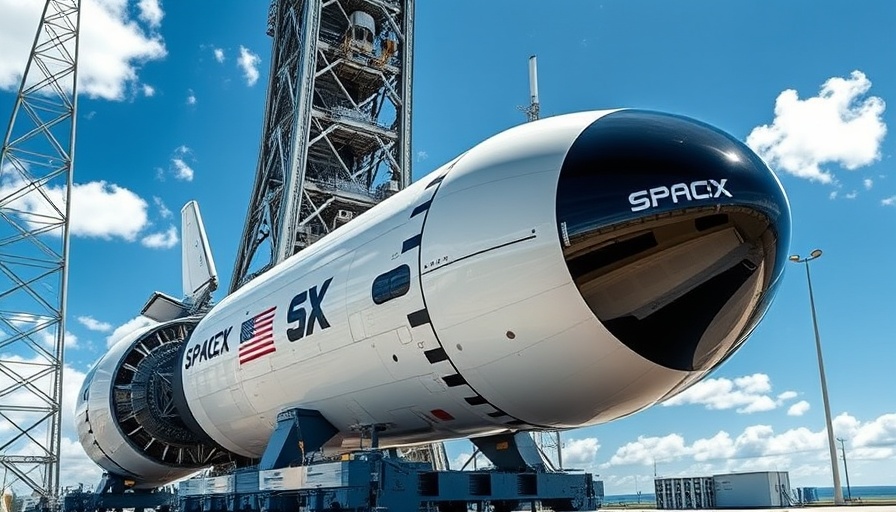
The Milestone of the Fram2 Mission: A New Chapter in Space Exploration
On March 29, 2025, SpaceX reached a significant milestone as the Falcon 9 rocket and Crew Dragon capsule for the Fram2 mission were rolled out to Launch Complex 39A at NASA's Kennedy Space Center in Florida. This launch, scheduled for March 31, promises to be historic, as it marks the first time a crewed mission will fly over both of Earth’s poles. As space travel becomes increasingly accessible, the Fram2 mission showcases the potential for private astronauts to contribute to scientific advancement.
Meet the Crew: A Diverse Team for a Groundbreaking Expedition
The crew aboard this pioneering mission represents a vibrant mix of nationalities: Chun Wang from Malta serves as the commander, Jannicke Mikkelsen from Norway is the vehicle commander, Rabea Rogge of Germany is the pilot, and Eric Phillips from Australia will act as the medical officer and mission specialist. Their collaboration reflects the global nature of modern space exploration, emphasizing unity in pursuit of knowledge beyond our planet.
Scientific Endeavors: Groundbreaking Research in Orbit
Apart from its historic nature, the Fram2 mission has outlined ambitious scientific goals, including conducting 22 experiments during its three to five days in low Earth orbit. Among these is the unprecedented cultivation of mushrooms in space, which could serve as a potential food source for long-duration missions in the future. Furthermore, the crew plans to take the first-ever X-rays of the human body in space, providing invaluable data that could enhance our understanding of human health in microgravity environments.
SpaceX and the Future of Human Spaceflight
The Fram2 mission is the fourth flight of the Crew Dragon capsule "Resilience," which has previously demonstrated its reliability in NASA missions and privately funded ventures. This specific Falcon 9 rocket's first stage will mark its sixth flight, underscoring SpaceX's commitment to reusability—an essential progress factor in reducing the costs of space travel and opening the door to more frequent missions.
Innovation on the Horizon: Lessons from Fram2
The success of the Fram2 mission hinges not only on the technical prowess of SpaceX but also on the innovative spirit it embodies. As commercial space travel evolves, the inclusion of private astronauts could expand our horizons. These missions may facilitate scientific exploration that was once limited to government agencies, illustrating how private entities can enrich humanity's understanding of space.
Final Thoughts on the Trajectory of Private Space Missions
Fram2 stands as a testament to our era of innovation in space exploration. By blending scientific research with the excitement of new frontiers, this mission inspires future generations to dream bigger. As human spaceflight continues to evolve, every expedition provides learning opportunities that pave the way for the ambitious journeys yet to come. We are at the dawn of a new age in space travel, and everyone can be a part of it—whether by watching the launch live or engaging with the science behind these extraordinary feats.
In conclusion, as we anticipate the launch of Fram2, it's essential to explore how these innovations reshape our understanding of space and expand the future of exploration. Stay informed, stay curious, and be a part of this grand adventure!
 Add Row
Add Row  Add
Add 




Write A Comment